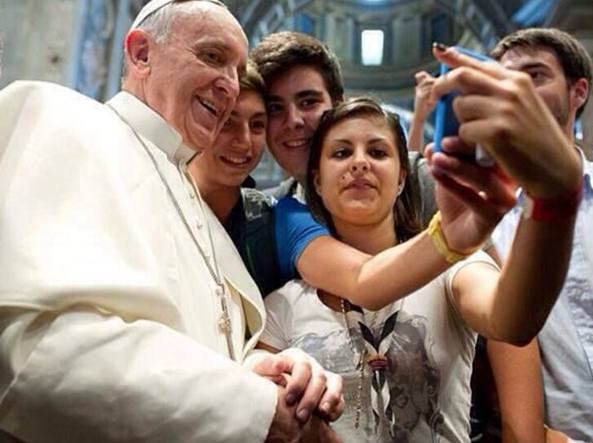fr. Luciano Sandrin
When walking the streets of my town I come across young men who instead of the usual bags or providential umbrellas offer an extendable stick. Its technical name is ‘selfie stick’, a small stick on the top of which you put a mobile phone and then take a selfie. Many people use it, at high levels as well, to immortalise some fleeting moments of their lives. A teacher asked his students why they used that strange gadget. Their answer was: “But teacher, with the stick we can do the selfies as we want to do them”. That teacher is called Giuseppe Riva and he has written a small book on this new fashion. I read it on the train from Rome to Padua. Its title is ‘Selfie. Narcisismo e identità’ (‘Selfie. Narcissism and Identity’). For him the success of the selfie does not mean that we are becoming more narcissistic. Instead, it marks an important change in the way people are, how they see themselves, how they live in the world, and how they live with other people.
The term ‘selfie’ appeared during the first years of this century to refer to a kind of photograph where the photographer photographs himself and makes his own self-portraits in a very easy way: you need only look at yourself on the screen of a mobile phone, as in a mirror, and then press the button. And you can put it immediately online and on the social networks. A selfie can be immediately seen by all your ‘friends’ on Facebook or a WhatsApp group. As early as the year 2014, over ninety million selfies a day were being shared inline. And some people immediately perceived that here was a goldmine and opened a research laboratory. Looking closely at a selfie I can understand where it was taken, who is present in the picture, what they are wearing and the clothes brand, what objects are present, and other details as well. ‘In practice’, our author sums up, ‘selfies are the Trojan horse that Facebook is using to manage to understand us better’. And to offer us various objects to buy.
 Is this wish to be seen, to attract attention, and to be admired, a symptom of increasing narcissism? Does it conceal, that is to say, a not very healthy wish to be liked by everyone? Can one speak about ‘selfitis’ as a new form of addiction? And this in particular amongst teenagers?
Is this wish to be seen, to attract attention, and to be admired, a symptom of increasing narcissism? Does it conceal, that is to say, a not very healthy wish to be liked by everyone? Can one speak about ‘selfitis’ as a new form of addiction? And this in particular amongst teenagers?
The story of Narcissus tells the tale of a handsome young man who, in love with his own reflection it the water, died when trying to reach it. In the view of our teacher, there are differences between the story of Narcissus and the behaviour of a teenager who takes a selfie. The first is that Narcissus does not look for his own reflection but is seized by it and is deceived by it, whereas a selfie is always an intentional and conscious act. The second is that Narcissus wants to keep the image he is in love with for himself alone, whereas in the case of a selfie there is a wish to share its contents, given that its value is fuel for one’s own self-esteem. Of interest here is the title of a book in French – ‘Je selfie donc je suis’. This can be translated as ‘I selfie, therefore I am’, with suitable apologies to the philosopher Descartes who, instead, observed: ‘I think, therefore I am’.
But what can one then say about the psychology of the selfie, given that the young people who take them do so three to eight times a day, reaching a high point of a hundred, and that one teenager in every ten takes selfies that are dangerous?
Each one of us deals with a long journey involving the construction of their own identity through an understanding of what we are and who we want to become; our individual characteristics (personal identity) and the place that we have within society (social identity). A selfie enables us to offer markedly selected aspects of what we feel that we are in order to convince others of the truth of what we are offering, and it makes us more visible to the people around us. And through the selfies of other people we can discover possible new worlds and decide who we want to be and what we want to do.
However, we should never forget that we are in selfies but they do not relate all the wealth of the person that we are, and there is always someone who can use what we narrate, our pictures as well, for different – and not always respectful – purposes.
As is the case with a thousand other things, from chocolate to chips, selfies also have two faces – one that is positive and one that is negative. Life is full of attractions and snares, but if we have managed to get through, so, too, will our children, despite the smartphones and the selfies. The advice offered by our author is clear: ‘You need only help them to become aware of the risks and the opportunities. And then it is they who will chose, as for that matter we ourselves also did before them’.
Luciano Sandrin















Camillians on Facebook
Camillians on Twitter
Camillians on Instagram